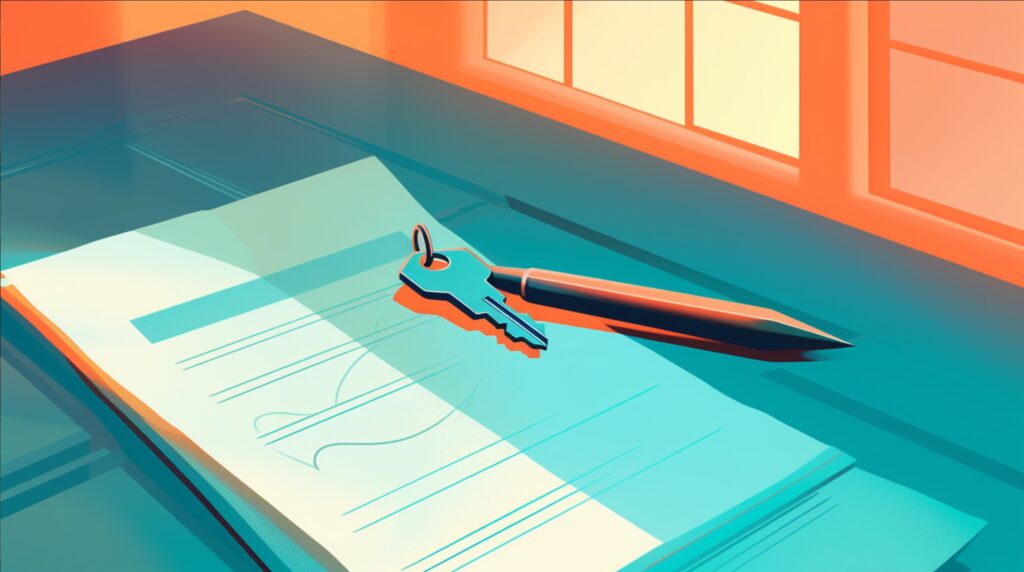
We are reader-supported. When you buy through links on our site, we may earn an affiliate commission.
Knowing your property line is crucial for homeowners. It’s part of your responsibility to know where your plot of land starts and ends. It can prevent potential disputes with your neighbor and ensures you respect your neighbor’s private space. Find property line is these six easy methods.
1. Check Your Property Line Map
A property line map or plat is basically a drawing of your property outlining the plot’s boundaries and lengths. It also has extra details that give you an idea of the property’s structure, such as elevations, corners or angles. In shared property lines, your plat may also include maps of the surrounding properties.
It’s the easiest method to look up your property line. If you don’t have a copy of your plat, get one from your local assessor’s office.
2. Review the Homeowner’s Deed
Another material to check your property line is the deed of the property. Like the plat, it’s a legal document that describes your land’s boundaries and measurements, including landmarks.
You can use the property deed as a guide to locate the corners of the property line manually. Use a clear and detailed landmark or description as a starting point. For example, if the deed references a row of trees as the right side of your property line, you can use this to trace the rest.
You can use stakes as markers for the property line. You should be able to match the measured lines on the deed with the physical measurements.
3. Hire a Professional Surveyor
If you don’t own a copy of your plat, another option is to hire a surveyor to perform a land survey. They can measure and map your land accurately and mark corners using stakes so you’ll know exactly where your property starts and ends. You can also request them to do other things, such as researching the property’s history if ever you just recently bought a land or home.
Be aware that hiring a qualified land surveyor will cost you. The average cost of an American Land Title Association (ALTA) or mortgage survey ranges from $2,000 and $3,000.
4. Check for an Existing Property Line Survey
If you recently acquired a property, you can find a copy of the complete property line survey in local or country offices and title or mortgage companies.
Contact your county recorder’s or assessor’s office and get a copy of existing property line records for viewing. Sometimes, you’ll get an outdated copy, which needs to be renewed. If you need help getting one, reach out to your mortgage or title companies. You may need to pay a fee to get the record.
5. Look for Property Line Markers
If the property is relatively new, stroll around it as you might get lucky to find property line markers. Look for steel bars, stakes, flags or fences that indicate the corners of the property.
Some markers may be buried, but a metal detector can help locate them. Finding these markers will give you a good guess of the property line, though you must confirm it through a legal record. Before you dig for markers, call 811, the national call-before-you-dig phone number, to ensure you don’t dig into an underground utility line.
6. Find Property Lines Online
There may be an option for you to locate property lines online. Here are some of the convenient ways.
Browse Through County Websites
Some counties have digitized public documents and government records to make them more accessible. Although not all, some sites have uploaded property records on their database.
Visit your county website and browse to find your area. If you can’t find information about property lines, your country might not have completely uploaded the records or the online feature is unavailable. In this case, you need to visit your county’s office in person.
Review Privately-Owned Geographical Information System (GIS) Websites
GIS displays data about the earth’s surface, including streets, vegetation and buildings. A detailed GIS, often owned privately, can show more advanced information about city boundaries, sewer and water connections, property lines and outlines of buildings with aerial shots of the locations.
Since this information is private, you can’t find this on government sites. You can start with this list of GIS data sources and go from there.
Use an App
Thanks to technology, you may find your property line using an app. Here are three app options you can download on your phone.
LandGlide is a popular app for this purpose. It’s an app that uses GPS to give you access to over 150 million parcel records in over 3,000 counties. It offers a free trial for the first seven days and a monthly subscription fee of $9.99 after that.
The Regrid is another tool to look up property line details. You can use it to access over 156 million land parcel records across the country. You can sign up for free, but if you want more comprehensive information and advanced features, it will cost you $10 per month.
Another excellent recommendation for checking property lines is Property Survey GPS. You can do several things with this app, such as measure, explore or survey your property and lot. It can also give you an idea about how big your lot is and you can store this information and other measurements on the cloud. It’s easy to use and perfect for people who find using technology intimidating. It’s free to use for one month.
Search on Google Maps
Check if your property line is visible on Google Maps. Go to the maps and enter your exact address. If you’re unable to view it, switch to other methods mentioned above. Despite Google’s advanced features, not all property lines will be detectable through Maps.
Find Property Line Through Various Means
Finding your property line is essential because you could get into disputes with your neighbors. Additionally, property lines matter because they give you an idea of how far your home improvement projects go. You might be installing a fence only to find out later that you’ve built it a few inches away from the property line and into your neighbor’s land.
Thankfully, you can locate your property line through several means. You can check your property deed, hire a surveyor or research online. Know where your property ends and starts, so you can perform home renovation projects without causing problems to your neighbors.










